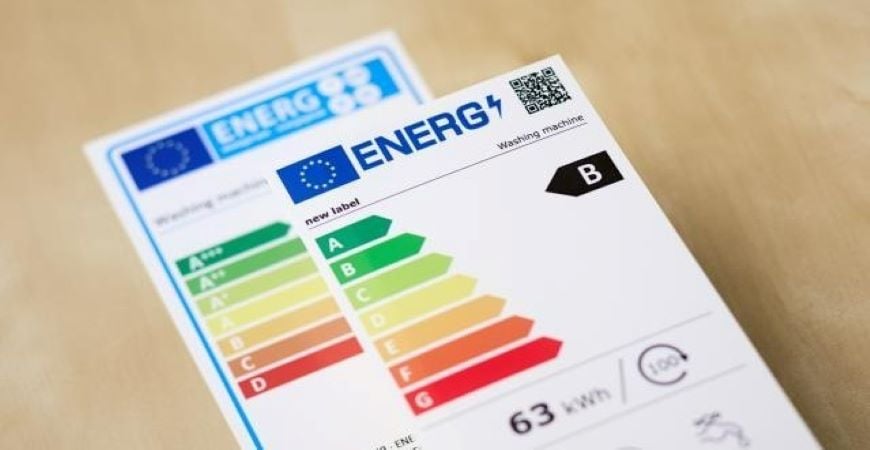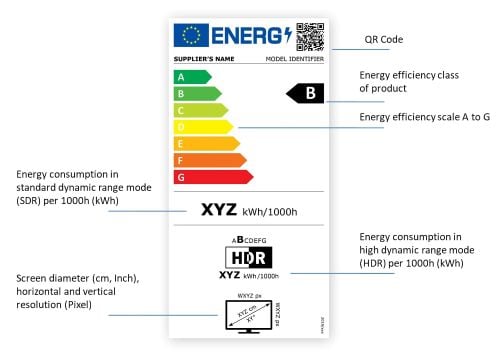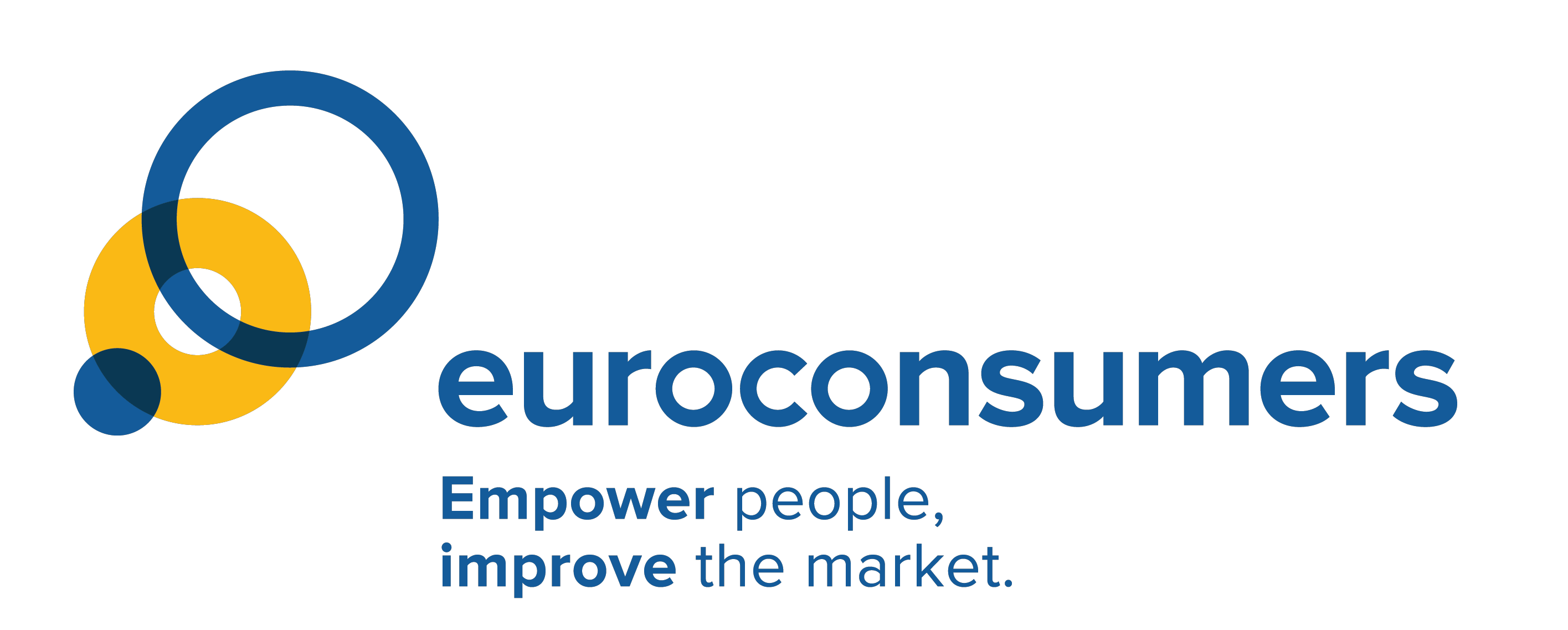TV energy labels break strict new EU efficiency rules

New energy labels were introduced to the EU marketplace in March 2021. Since 1995, the A+++ to G ratings system has been a familiar sight on household goods, but with efficiencies constantly improving the additional A+++ ratings caused confusion.
The new streamlined labeling will scrap the A plus system and go back to a simple A-G scheme. The significantly higher standards required to get an A rating will be tough to reach, giving manufacturers and research departments the impetus to keep on innovating for efficiency.
TV and computer screens among first to get new EU energy label
Initially the new rating scheme only applied to fridges and freezers, dishwashers, washing machines and TV and computer screens but since September 2021 has extended to lighting and bulbs. QR codes on the labels will also link up to an EU-wide database giving consumers and repairers more details about the product, this will help manage replacement parts and ease the repair process if things go wrong.
What the new TV and monitor label looks like:

At the same time as changes to the labeling rules, March 2021 saw new regulations on ecodesign introduced. These include minimum efficiency requirements and reinforce consumer rights to repair products, together these moves will help support the circular economy and embed the ‘repair reflex’ in consumers.
As well as reinvigorating a sustainability race to the top A category, the new label is designed to make it simpler for consumers to choose appliances that consume less and reduce energy bills. This is becoming ever more important as the impact of the climate crisis is felt and energy prices soar.
Euroconsumers members measure extent of new energy label
However, to increase recognition and help consumer choice, the new labels need to be widely used. Retailers have had plenty of time to bring in the changes required prior to the new rules coming into force in December 2021. Since 2020 manufacturers could not import products carrying the old label, since March 2021 both labels were required until December 2021 when it mandatory to only use the new system.
In January 2022, Euroconsumers members Test Achats / Test Aankoop and OCU set out to discover whether the new labeling rules were being consistently followed by on and offline retailers. Here’s what they found:
- OCU, Spain: after visiting 113 different stores and 15 web shops, researchers found that nearly half (45%) of the shops and websites still featured old efficiency labels. In general, larger retailers were better at complying than the smaller shop. However, none of the TV screens featured any kind of label.
- Test Achats / Test Aankoop, Belgium: carried out a larger survey of 353 physical stores of 15 different retailers, and 19 websites. Over all categories, 80% of devices were correctly labeled according to the new system. But, as with OCU’s research, Tb and computer screens were poorly labeled. More than a quarter of all televisions and half of all computer screens did not have any energy label displayed.
This could be because the new energy rules are much stricter, none would classify any higher than “F”, the second to lowest possible rating. Perhaps manufacturers would rather not display anything than show the lack of energy efficiency in screens. However, it is transparency over energy use which will help drive innovation in ecodesign and make clear to consumers which appliances will cost them more to run, and impact the environment the most.
Clear information empowers consumers to make sustainable choices
Since 1995, the EU energy label scheme has successfully improved product energy efficiencies, and according to European Commission research, has high recognition and influence rates with consumers. A survey in 2019 found that 93% of consumers confirmed that they recognised the label and 79% confirmed that it had influenced their decision on what product to buy. Maintaining the integrity of the labeling system requires manufacturers and retailers to comply with the rules and give consumers maximum information about their purchases.
Establishing a recognised and trusted labeling system also helps empower consumers to become drivers of the green transition, pushing the demand for high quality, refurbished products and raising expectations of sustainable, affordable products and markets that are Approved by Tomorrow.

